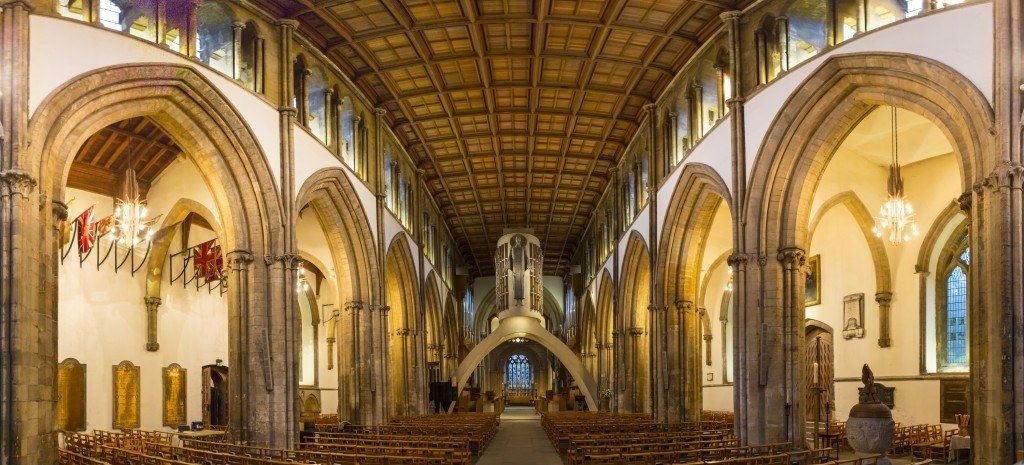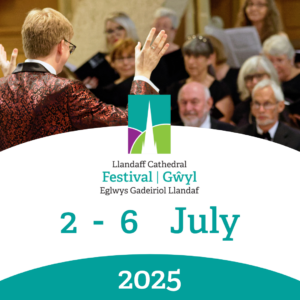The Lady Chapel
Completed in about 1280, the Lady Chapel is named in honour of the Blessed Virgin Mary, the Mother of Jesus. In the centre of the reredos, the restored fifteenth-century carved screen behind the altar, is a statue of Mary and the Christ-child by A. G. Walker, placed there in 1934. The gilded panels to each side, designed by Frank Roper in 1954, each depict a wildflower with Welsh names that honour Mary.
The stained glass in the nineteenth-century east window represents the “Jesse Tree”, depicting the ancestors of Jesus as listed by St Matthew at the beginning of his Gospel account. All five windows were designed by Geoffrey Webb in the twentieth century, from the 1920s to the 1950s.
The stencilled walls and ceiling, also designed by Webb, date from 1908 and were restored in 1988.
The tomb of William de Braose, bishop of Llandaff from 1266 to 1287, can be seen on the north side of the altar.
In the eighteenth century, it was known as the Welsh Chapel because of the services held there in Welsh.
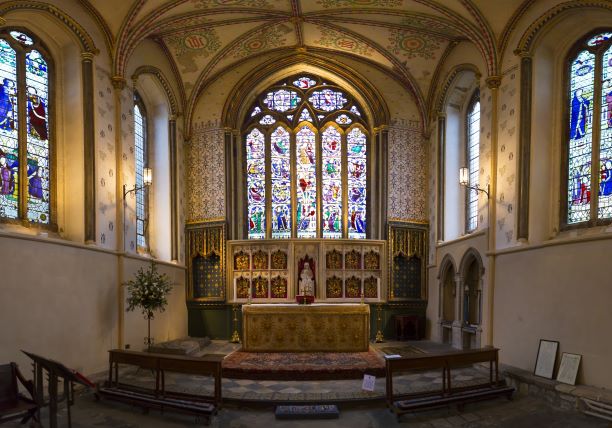
The St Dyfrig Chapel
Originally known as the Mathew Chapel, it is now named in honour of St Dyfrig, a sixth-century Welsh Saint and one of the patron saints of the cathedral, this small chapel is a haven of peace reserved for quiet prayer and reflection. To the right of the altar is the aumbry, where the Blessed Sacrament (bread and wine consecrated during the Holy Eucharist) is kept. Above it is a modern statue of Dyfrig by John Excell. Above the altar are panels depicting the six days of creation, designed by the nineteenth-century artist Burne-Jones, and made by Harold Rathbone at the Della Robbia Pottery in Birkenhead, 1893-1906.
The medieval stone reredos that once stood behind the high altar is on the north wall of the chapel, and two tombs of the Mathew family. The chapel is divided by a timber and metal overthrow screen, designed by Robert Heaton as a memorial to Archbishop Glyn Simon, bishop of Llandaff from 1957 to 1971.
The Regimental Chapel of the Royal Welsh
Also known as the St David Chapel, it was designed by George Pace and dedicated on the 22nd of September 1956 in memory of the fallen of all wars since the eighteenth century. Brass floor tablets and pew ends commemorate officers of the Welch Regiment, and stones on the east wall the battles the regiment was involved with from 1792 to 1969.
Against the first pillar of the chapel stands the medieval Majestas, which stood in the gable of the west front until 1984.
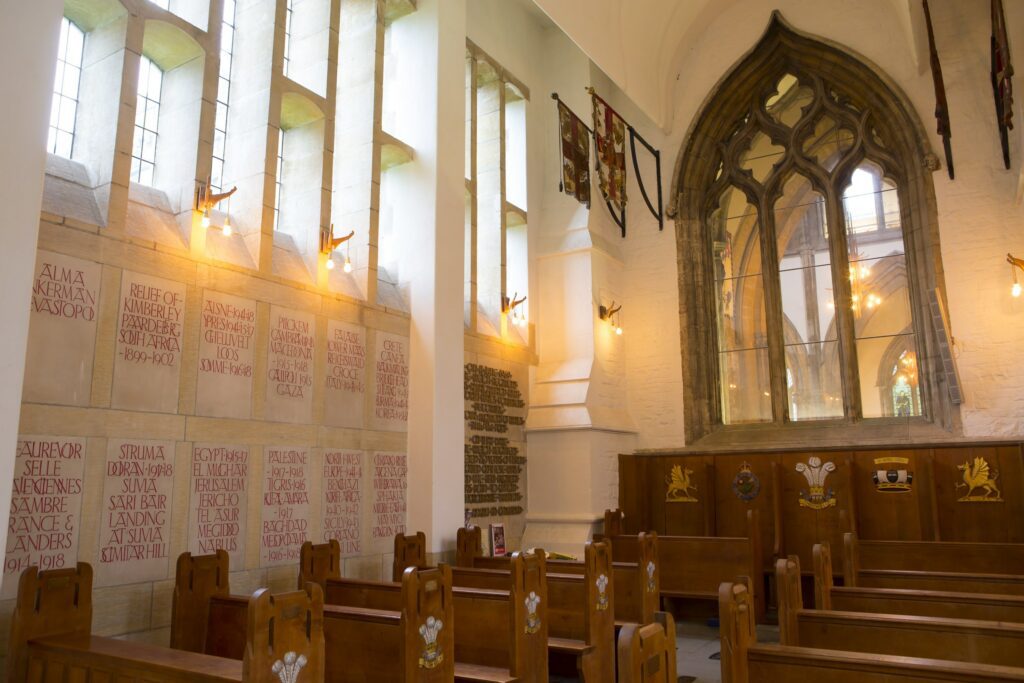
The St Illtyd Chapel
It is the chapel of the 53rd (Welsh) Infantry Division. Behind the altar is the Rossetti Triptych – to read more about the Triptych please click here.
The St Teilo Chapel
The Teilo Chapel is a small chapel that lies at the east end of the south aisle, situated next to the Lady Chapel. To the right of the altar, enclosed in a reliquary, is where the reputed skull of St Teilo is kept, mounted on art nouveau silver. The skull was returned to the cathedral from Australia in 1994. The stained glass in the east window is by William Morris and Ford Madox Brown, and depicts Christ the King, with Zacharias, the father of John the Baptist on the right, and Elizabeth, with an infant John the Baptist, on the left.
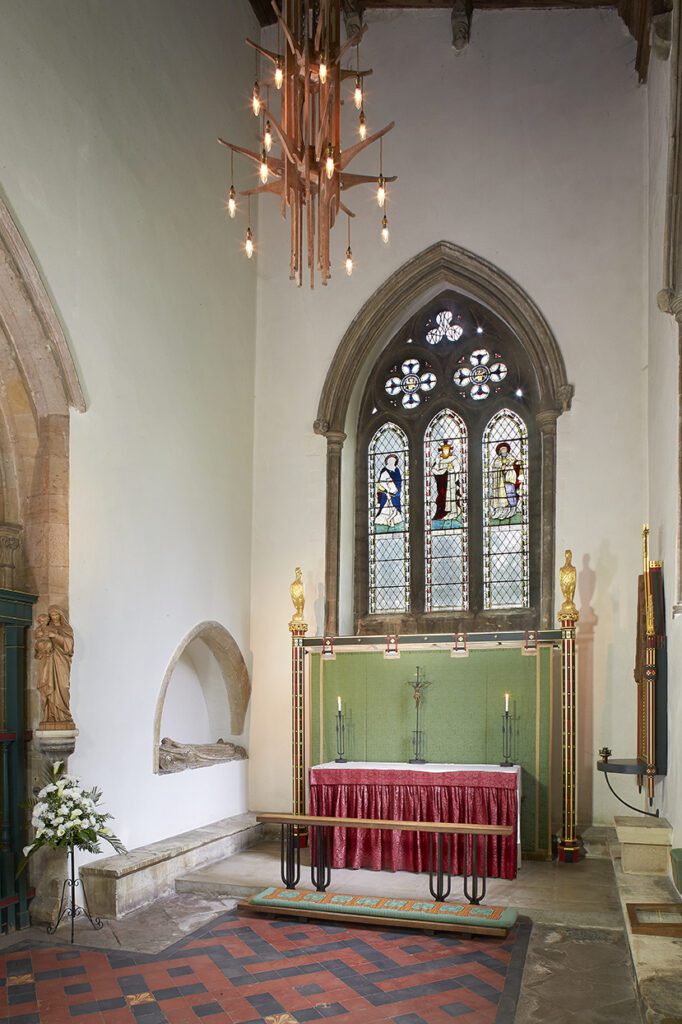
The St Euddogwy Chapel
This chapel, at the east end of the north aisele, no longer exists, its altar removed to another church following the building of the new organ which was completed in 2013. The various RAF memorials remain in position.
The Nave
Dominating the nave is the concrete parabolic arch supporting the organ case. This was designed as a pulpitum by George Pace in the post-war restoration to divide the nave from the choir, whilst leaving an uninterrupted view through the cathedral from the west door to the Lady Chapel.
The nave is dominated by Sir Jacob Epstein’s Christ in Majesty or Majestas – for more information on this please click here.
On the floor next to the south wall is the effigy that is said to represent Henry, prior of Abergavenny and bishop of Llandaff from 1193 to 1218. Near the effigy is a niche containing a Flemish wooden carving from c.1430 of the Dormition of the Blessed Virgin Mary.
The bronze sculpture of St Francis preaching to the birds is by the Penarth sculptor, Frank Roper, and was carved in 1991. His work can be seen in other parts of the Cathedral and many other churches around the diocese, as well as in England, such as Durham Cathedral.
